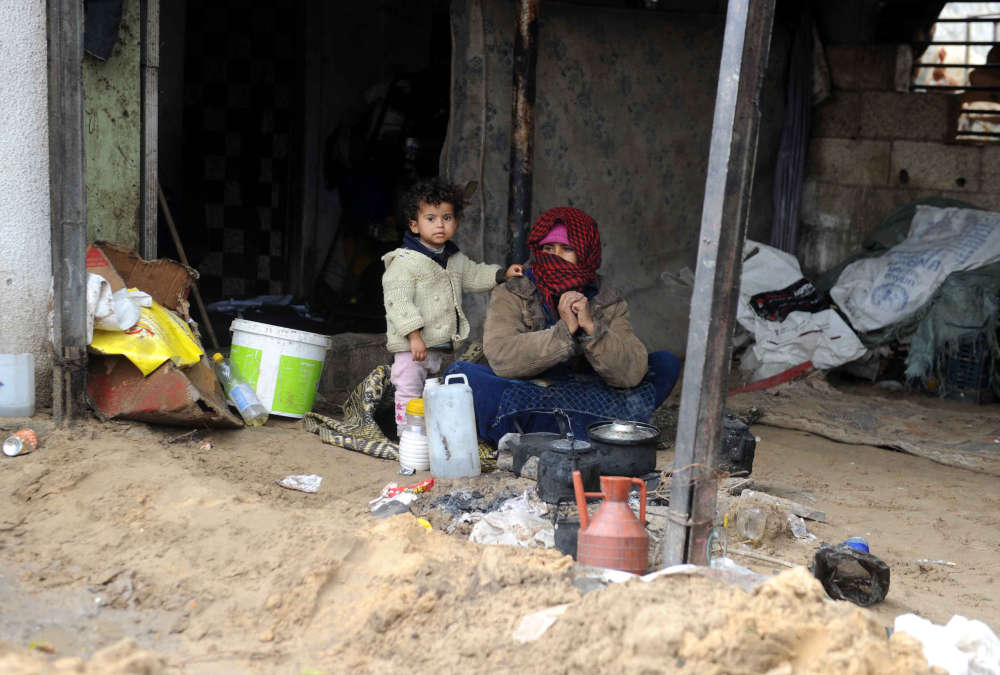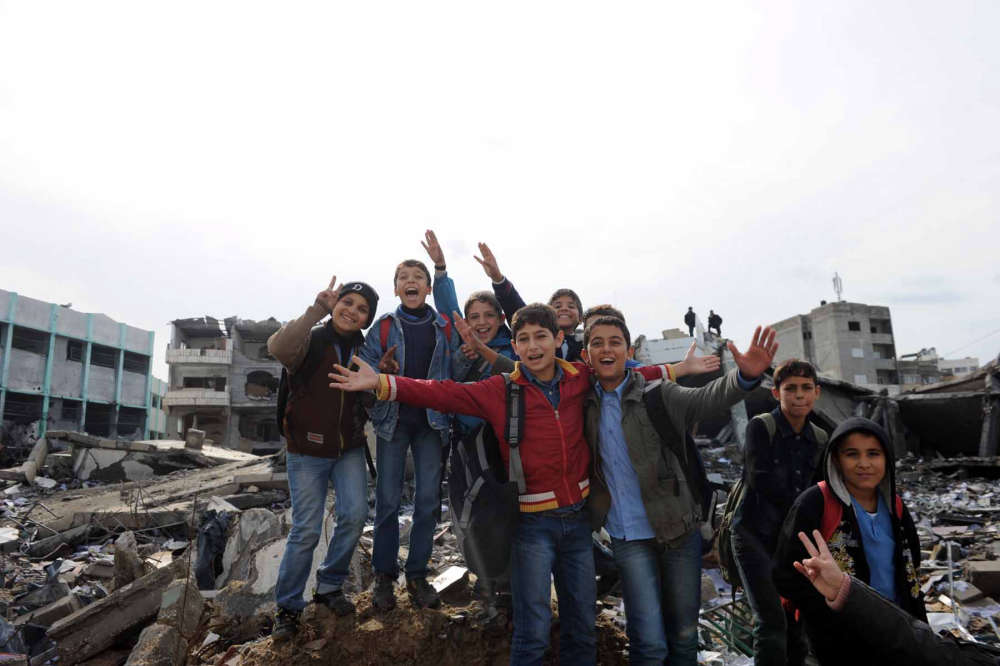The humanitarian situation in Gaza is reaching a breaking point alongside a rapidly deteriorating economy and an unprecedented threat to the delivery of basic services to most of the population. Without significant efforts on the ground, close to two million people are now at risk of losing the limited support and services on which they have been relying for survival for more than a decade.
One year ago, the UN Country Team in the occupied Palestinian territory published a report entitled “Gaza: Ten Years Later” that highlighted the continued downward trend of the humanitarian and socio-economic situation in the Gaza Strip. Now eleven years since Hamas took control of Gaza, Israel’s subsequent blockade, a worsening Palestinian internal divide, and three rounds of armed hostilities, all development indicators in Gaza are declining with a marked rise in unemployment, declining purchasing power, and crumbling basic services.
Poverty and unemployment have reached unprecedented levels in Gaza.
High levels of international assistance have maintained some degree of stability in Gaza; however, this is now also in jeopardy, and as a result, the living conditions of the two million people in Gaza have rapidly deteriorated. At the same time, the lack of a political trajectory either for an end to the conflict with Israel or reconciliation between rival Palestinian factions contributes to the overwhelming sense of frustration.
Over the past year, significant salary cuts imposed by the Palestinian Authority on tens of thousands of civil servants in Gaza, a reduction in humanitarian funding, and a decline in aid for reconstruction following the 2014 conflict, have resulted in what the World Bank describes as “a rapid collapse in socio-economic conditions in the Strip.”i

Photo by Shareef Sarhan.
Restrictions on Palestinians’ ability to leave Gaza, especially for work purposes, have been on a steady increase since the Second Intifada. As a result, almost half of Gaza’s two million people were born in isolation and have never left Gaza.
Basic services in Gaza are near collapse.
A recent survey by the Palestinian Central Bureau of Statisticsii found that more than half (53 percent) of all people in Gaza live in poverty – up from an estimated 40 percent just a few years ago. Nearly half (49.1 percent) of the workforce is unemployediii – one of the highest rates in the world; and GDP per capita has been in free fall, leading to reduced purchasing power. Increasingly, families have been living on credit, indebting themselves to provide for their daily needs.

Gaza has experienced a chronic electricity deficit for over a decade, severely disrupting the delivery of basic healthcare, water, and sanitation services, and undermining living conditions. Over the past two years, energy supply has further decreased, owing to a reduction of payments and subsidies from the Palestinian Authority for electricity and fuel needed to run Gaza’s only power plant. This political wrangling between the PA and Hamas and the poor state of electricity infrastructure across the Strip has resulted in Palestinians in Gaza now living with some four hours of electricity per day.
In addition to impacting the daily lives of two million people, the lack of energy also affects the provision of critical health, water, and sanitation services. Water supply is highly irregular, and sewage is left untreated. For more than a year, what corresponds to over 40 Olympic-size swimming pools of raw – or partially treated – sewage has been dumped into the Mediterranean Sea every single day, as wastewater treatment facilities are unable to operate.
Health care services are particularly stretched. Since the beginning of the “Great March of Return” on March 30 this year, more than 100 Palestinians have been killed and some 14,600 injured in recurrent protests along the perimeter fence with Israel. Since March 30, some 450 patients have been discharged early to make room for new waves of expected casualties, and some 6,000 elective surgeries have been postponed (including cancer surgeries, elective heart surgeries, orthopedic surgeries, and many other non-urgent surgeries).
Out of the nearly 4,000 people injured by live ammunition, about one-third will likely have long-term disabilities. For many families, the impact of these protests will be felt for years to come and will add to the recurrent traumas for families in the Gaza Strip. A recent survey found that 95 percent of children in Gaza – children who have already experienced three devastating rounds of conflict – exhibit signs of psychological distress.iv
Even before the onset of demonstrations near the fence at the end of March, many hospitals and clinics had had to cancel or postpone many non-critical treatments and operations, due to shortages of doctors, electricity, and critical drugs. There is currently less than a one-month supply of 50 percent of the essential medicines.
In the past, high levels of international assistance have prevented the collapse of basic services and reduced humanitarian vulnerabilities. In particular, the services provided by UNRWA for the 1.3 million people living in Gaza who are refugees, have been essential in ensuring relatively high levels of basic health care and minimum standards of education in the Gaza Strip. However, unprecedented low levels of international funding are now threatening these safety nets, which have been keeping Gaza afloat.
Notwithstanding recent generous pledges, UNRWA currently has a funding deficit of US$ 250 million. Without additional funding, 275 UNRWA schools in Gaza may not be able to open when the new school year starts in August – potentially leaving 272,000 children without access to education. UNRWA operates 22 health centers, which provide primary health care to over a million people. Nearly a million vulnerable refugees risk losing the food assistance provided by UNRWA. With public services stretched to their limits, no alternative assistance or services are available to Gaza’s refugees. With the joint humanitarian appeal for Gaza projects remaining less than 14 percent funded, the funding crisis has affected other critical humanitarian organizations beyond UNRWA.
International assistance, previously keeping Gaza afloat, is now in jeopardy. It is critical that the international community find a way to sustain UNRWA’s essential services to maintain refugees’ access to education, health care, and food assistance at a time when Gaza is at its most vulnerable.
Humanitarian agencies are on the ground in Gaza, working day and night to provide support to health care providers, water and sanitation facilities and schools, and to deliver assistance to those most vulnerable. Some US$ 13.9 million are urgently needed to address some of the worst consequences of the mass demonstrations at the fence through September 30, by providing life-saving healthcare and psychosocial support to those wounded or affected, alongside general protection and monitoring.
Humanitarian funding and political action are critical for the people in Gaza.
While coping with the immediate crisis, we must also find a way to instill hope for the future in Gaza’s young population – hope that they can get a job, an education, a future. That requires first and foremost a quick injection of cash into Gaza’s economy. Support for the job creation and cash-for-work programs run by the World Bank, UNRWA, UNDP, and others would create jobs and generate income for many families in the Strip. Secondly, improving the electricity supply would have a positive impact on the daily lives of all people in Gaza. Other possible measures include the expansion of the fishing zone, and the granting of work permits for Palestinians from Gaza to work in Israel.
Recent months have seen some improvements in movement and access for Palestinians in Gaza with the opening of the Rafah crossing with Egypt through the month of Ramadan. There was also an increase in Israeli approvals of items usually restricted for import into Gaza. However, it will take much more to reverse the deterioration of the humanitarian situation in the long run.
In the short and medium term, it is critical that we work on several fronts at the same time. As a priority, we must ensure sufficient support for humanitarian assistance on the ground. Second, we must do all we can to make sure that UNRWA continues to provide its critical services to the population. Third, we must look for immediate measures that aim to bolster Gaza’s infrastructure so that the energy, water, and health systems remain intact. Finally, support to Gaza’s economy with programs aimed at creating jobs and reviving Gaza’s industrial sectors should move forward. Without progress on all these fronts, the UN will not be able to address the needs and restore hope to the people of Gaza.
i World Bank, Economic Monitoring Report to the Ad Hoc Liaison Committee, March 19, 2018, para 5, available at http://documents.worldbank.org/curated/en/324951520906690830/pdf/124205-WP-PUBLIC-MAR14-5PM-March-2018-AHLC-Report.pdf.
ii Palestinian Central Bureau of Statistics (PCBS), Household Expenditure and Consumption Survey, October 2016 – September 2017, available at http://www.pcbs.gov.ps/Downloads/book2368.pdf.
iii PCBS, Labour Force Survey (January–March 2018), available at http://www.pcbs.gov.ps/portals/_pcbs/PressRelease/Press_En_8-5-2018-LF-en.PDF.
iv Save the Children, Generation of Children in Gaza on the brink of a mental health crisis, new Research Shows, June 1, 2018, available at https://www.savethechildren.net/article/generation-children-gaza-brink-mental-health-crisis-new-research-shows.


